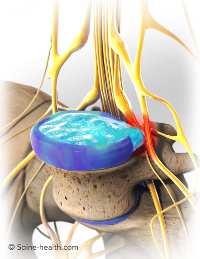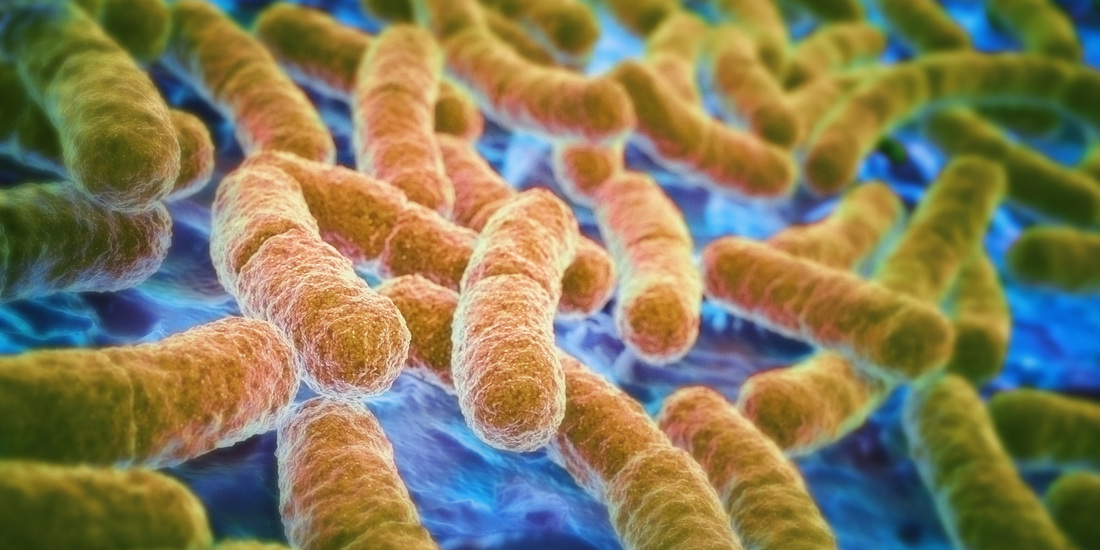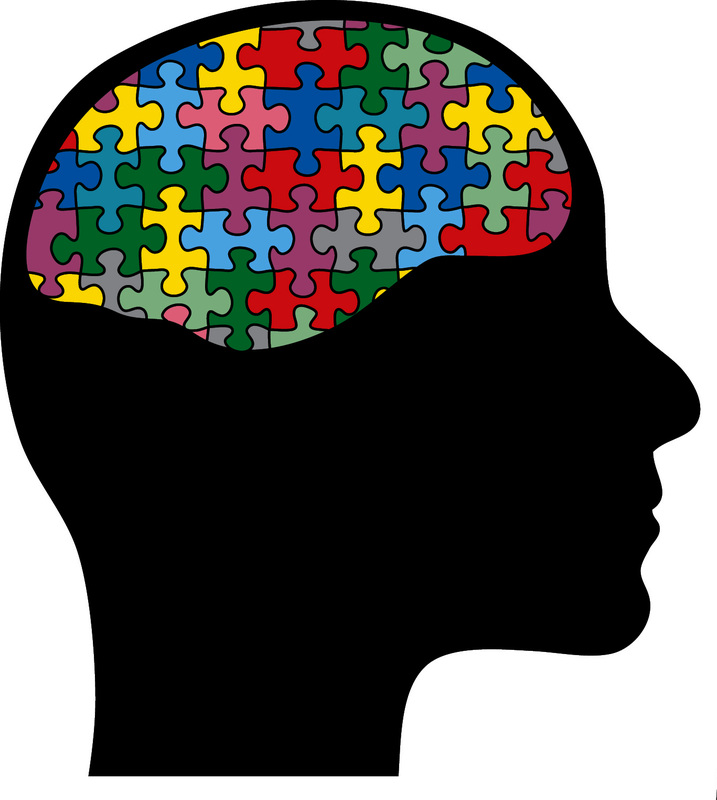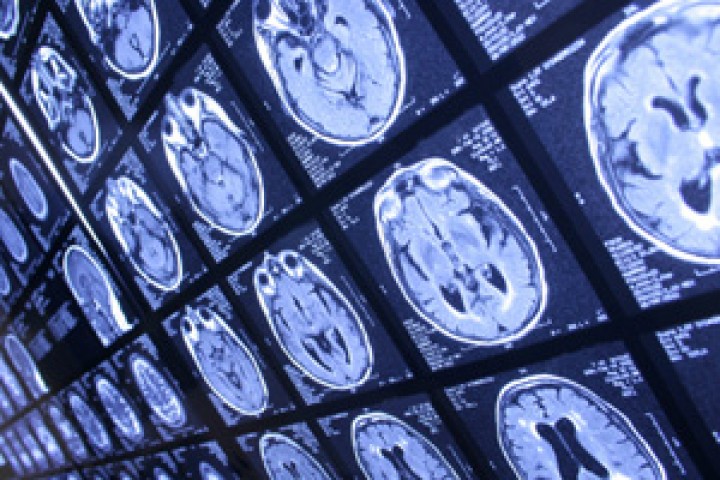 Herniated discs seem to be the bane of modern workplace. They can be disabling and repetitive for many people especially heavy lifting and hard working individuals. Current treatment is quite limited except for pain shots or spinal surgery that may not offer the success hoped for. The reason for herniated discs seems to be related to inflammation. That may cause the cells in the disc to die and weaken the protective function in serves to the fibrous ring that acts like cushi...on between the spinal vertebra. Anti-inflammatory drugs have not been able to quell the inflammation but a recent animal study suggests that CBD could be the answer for protecting the corp of the herniated discs from deteriorating. That would be a big step in preventing the herniation process and protecting millions of people against this modern plague of the workplace. Cannabidiol is the major component of cannabis. Cannabis has two major types, marijuana and hemp. Hemp is no psychoactive effects and products like CBD are legal across the US. A spinal disc is made up of a central living core, called the nucleus pulposis, and a fibrous sheath. Herniated disc occur when the fibrous sheath weakens and the nucleus bulges into the nerve space. In this study nucleus cells were subjected to hydrogen peroxide similar to what happens in inflammation. Untreated cells often died but CBD treated cells thrived without permanent injury. Specifically the researches found much lower levels of inflammatory signaling molecules in the cells that stimulate the self-destructive cell processes. In the author’s own words: “Pre‑treatment with cannabidiol suppressed the promotion of COX‑2, iNOS, IL‑1β and IL‑6 expression in the nucleus pulposus cells following H2O2 exposure.” This report expands the potential protective and healthful features that CBD can offer to those with herniated disc problems. It might prevent repeated episodes and improve the healing of an acute herniation. CBD appears to offer several other benefits including pain reduction, restoring nerve function and reducing muscle spasms. In addition CBD seems to be well absorbed through the skin to provide direct effects to joint, ligaments and muscles in the area. An appropriate serving size for an acute episode might be 30 mg of CBD 2-3 times daily but only 1/4 may be needed for prevention. With no side effects, toxicity or other drug interaction cannabidiol may be the ideal treatment and prevention of ruptured disc diseases. I recommend Elixinol CBD products for quality and results. Mol Med Rep. 2016 Jul 13. doi: 10.3892/mmr.2016.5513. Protective effect of cannabidiol on hydrogen peroxide‑induced apoptosis, inflammation and oxidative stress in nucleus pulposus cells.
0 Comments
“My doctor says I have a fatty liver and I should stay away from fat,” writes this week’s house call. “Are high-fat foods the culprit here? Any tips to help with a fatty liver?”
Indeed, your doctor is right to feel concern: Fatty liver is a dangerous yet misunderstood disease. In America, it affects 90 million of us and 17 percent of our children. Think about foie gras, the French delicacy made from duck or goose liver. It is made by force-feeding the animals a combination of sugar with corn and starch (a really sad, horrible practice), intentionally creating a fatty liver. So if you’re gorging on sugar and starch, you’re essentially doing the same thing with your own liver. Fatty liver literally means your liver fills with fat, paving the path for chronic disease and inflammation. You might be surprised to learn the primary culprit here. Research shows that carbs (and not fat) produce more fat in your belly and liver. Sugar switches on fat production in your liver, creating an internal process called lipogenesis, which is your body’s normal response to sugar. Fructose, the most detrimental sugar that heads directly to your liver, actually ramps up lipogenesis. That explains why sugar, especially fructose, becomes the chief cause of liver disease and the leading cause of liver transplants. What’s so bad about having a fatty liver? Well, among its numerous repercussions include inflammation, which triggers insulin resistance and pre-diabetes, meaning your body deposits fat in your liver and organs including your belly (called visceral fat). It gets worse. Excess sugar and starch creates more serious problems including high triglycerides, low HDL (“good” cholesterol), and high amounts of small LDL (dangerous cholesterol particles that cause heart attacks). Fatty liver also increases your heart attack risk. Sadly, most people have no idea they have a fatty liver. Today we’re even seeing 12-year-old boys with fatty livers because they guzzled soda for years and now need liver transplants. Fructose, the primary sweetener in sodas, is a key player in the ever-increasing rates of nonalcoholic fatty liver disease (NAFLD). We’re feeding children fructose and other highly toxic substances, setting the dismal stage for liver transplants, high blood pressure, diabetes, heart disease and abnormal cholesterol. Doctors then prescribe numerous medications to alleviate these and other issues. Overall, it becomes a bleak picture. I mentioned earlier sugar, not fat, creates fatty liver. Here’s where it gets interesting: Dietary fat actually turns off the fat production factory in your liver. You see, unlike carbohydrates and protein, dietary fat does not trigger your pancreas to secrete insulin or stress out your liver. Your body prefers to burn rather than store dietary fat, unless you combine it with carbs. When you eat the right fats, you increase your metabolism, stimulate fat burning and decrease hunger. One of my favorite fats is medium-chain triglycerides or MCTs, either in coconut oil or as a stand-alone oil. To prevent or reverse fatty liver, you’ll want to cut processed carbs and increase healthy fat intake, especially saturated – yes, saturated – fats from healthy foods like coconut and grass-fed beef. I realize all of this might sound confusing. After all, our government tells us to limit saturated fats to 7 to 10 percent of our calories even with the updated dietary guidelines (which science doesn’t support, by the way). We’ve demonized saturated fat for so long that we’ve missed the purple elephant in the room: SUGAR. Thankfully, newer guidelines tell us to limit sugar intake, however, they don’t go far enough. These guidelines should be fine-tuned to include whole grains, which also break down into sugar in your body. According to current guidelines, you’re still supposed to get one-quarter of your calories from sugar to be healthy. Crazy, right? I discuss how fat can benefit your liver and many other dietary fat issues in Eat Fat, Get Thin, but the take-home message here is that healthy saturated fats lower inflammation when you eat them as part of a low-carb, high-fiber, omega 3 fatty acid-rich diet. So how do you know if you have a fatty liver? If you eat lots of sugar and flour, have a little bit of belly fat, or if you crave carbs, you probably have a fatty liver. To heal that fatty liver and avoid its vast detrimental repercussions, you want to get to the root of those problems. Blood tests and an ultrasound can both detect fatty liver. If your blood test comes back abnormal, you must take it seriously. Even if your test comes back normal, don’t think you’re off the hook. A liver function test doesn’t always detect a fatty liver. An ultrasound is more sensitive. Fortunately, you can employ some simple but powerfully effective strategies to reverse or prevent fatty liver. I’ve found these diet, exercise and supplement strategies greatly benefit my patients. 1.Eliminate all high-fructose corn syrup (HFCS). Even when it comes in so-called healthy foods like salad dressings, don’t eat it. To put things into perspective, one serving of commercially made tomato sauce can have more fructose than a serving of Oreo sandwich cookies! 2.Get rid of white, processed flour and eliminate or greatly reduce starch. Even whole grain flours can be a problem. They increase your blood sugar levels, stressing your liver and resulting in high triglycerides, which promotes a fatty liver. 3.Add healthy fats. Functional Medicine becomes so simple: To heal the body, you remove the bad stuff and add in the good stuff. Incorporate anti-inflammatory, liver-healing foods like low-sugar fruit, vegetables, nuts, seeds, lean animal protein like chicken and fish and good, healthy fats like olive oil, macadamia nut oil, avocados, coconut oil, grass-fed butter and fish oil. A great way to combat sugar damage is to eat plenty of these healthy fats. You can get a powerful 21-day plan to easily incorporate healthy fats in Eat Fat, Get Thin. 4.Improve your metabolism through exercise. Routine, daily exercise improves insulin resistance and reduces fatty liver. Start out with something simple like walking 30 minutes. More seasoned exercisers might incorporate high-intensity interval training (or burst training) and weight lifting. 5.Supplement intelligently. The right supplements can help bring your body back into balance while it heals. Herbs like milk thistle are great for supporting the liver. I also use nutrients like lipoic acid and N-acetyl-cysteine, which make powerful antioxidants to heal and rejuvenate your liver while increasing the powerful antioxidant glutathione. Other liver-healing nutrients include B vitamins and magnesium. You can find these and other quality supplements in my store. 6.Eat detoxifying, liver-repairing super foods. Regularly eat foods from the cruciferous family – like broccoli, cauliflower and Brussels sprouts, as well as leafy veggies like kale, collards, cabbage, arugula, and watercress. At least a cup or two every day can help repair and heal the liver. Garlic and onions are amazing sulfur-rich foods that help detox the body. You’ll find amazing recipes and more ways to incorporate these amazing foods in The Blood Sugar Solution 10-Day Detox Diet. 7.Power up with protein. Protein at every meal, especially breakfast, becomes key to balancing blood sugar and insulin, cutting cravings and providing your liver the raw materials it needs to detoxify optimally. Start the day with farm fresh eggs or a protein shake. I recommend my Whole Food Protein Shake. Include nuts, seeds, eggs, fish, chicken or grass-fed meat for protein at every meal. A serving size is four to six ounces, or about the size of your palm. You need a healthy liver to combat toxic junk and chemicals in your environment. A healthy liver means your body stays healthy, you don’t get sick and you maintain plenty of energy. http://new.www.huffingtonpost.com/dr-mark-hyman/fatty-liver-is-more-dange_b_9952666.html A diet contrary to the standard American (low fat high carb) would appear to give you a far better shot at avoiding diabetes in all of its forms, along with its dreaded complications according with a new post in The New York Times: Is Alzheimer’s Type 3 Diabetes?
In Type 2 diabetes basically, cells throughout the body become resistant to insulin signals. In an effort to encourage cells to take up more sugar from the blood, the pancreas increases the output of insulin. The high levels of insulin could damage small blood vessels in the brain, and eventually lead to poor brain circulation. This problem could partly explain why Type 2 diabetes harms the brain. In Alzheimer’s, the brain, especially parts that deal with memory and personality, become resistant to insulin. The fact that Alzheimer’s can be associated with low levels of insulin in the brain is the reason why increasing numbers of researchers have taken to calling it Type 3 diabetes, or diabetes of the brain. What’s new is the thought that while diabetes doesn’t “cause” Alzheimer’s, they have the same root: an over consumption of those “foods” that mess with insulin’s many roles. How to correct the problem? The main step is to eliminate processed carbohydrate foods from the diet that I often refer to as "cutting out the whites", white sugar, potatoes, flour, milk, pasta, rice (even brown rice). Same thing goes for soda pop loaded with sugar and high fructose corn syrup. Not only are they addictive but they often overload our ability to manage the sugar in our blood stream that we must keep in tight control. Another way to help the body is NOT to eat or drink all the time. One or two meals per day with long periods between means can improve out body response to nutrients. Studies show that 14-16 hour fast from the evening meal time until mid morning or later can refresh the body's ability to handle all nutrients. Both these methods reduce the need for insulin and allow the body and brain to become more sensitive and responsive to normal levels of insulin and improve brain energy and brain health. The New York Times: Is Alzheimer’s Type 3 Diabetes?  A new study by Dr Robert Lustig shows obese children significantly reduced their risk of heart disease after cutting out fructose. Atherosclerosis: Short-term isocaloric fructose restriction lowers apoC-III levels and yields less atherogenic lipoprotein profiles in children with obesity and metabolic syndrome The conditions were tightly controlled so that only fructose consumption was affected. The children were given the same amounts of calories, fat, protein and carbohydrates as their typical diets. Obese children with MetS (n = 37) consumed a diet that matched self-reported macronutrient composition for nine days, with the exception that dietary fructose was reduced from 11.7 ± 4.0% to 3.8 ± 0.5% of daily calories and substituted with glucose (in starch). Participants underwent fasting biochemical analyses on Days 0 and 10. HDL and LDL subclasses were analyzed using the Lipoprint HDL and LDL subfraction analysis systems from Quantimetrix. Isocaloric fructose restriction for 9 days improved lipoprotein markers of CVD risk in children with obesity and MetS. The most dramatic reduction was seen for apoC-III, which has been associated with atherogenic hypertriglyceridemia. More info: Atherosclerosis: Short-term isocaloric fructose restriction lowers apoC-III levels and yields less atherogenic lipoprotein profiles in children with obesity and metabolic syndrome Why do doctors still prescribe insulin for type 2 diabetes when compelling re-search proves that to do so is virtually useless? Canadian nephrologist Dr. Jason Fung will address this and the role of insulin in Obesity at Low Carb USA - San Diego 2016 conference later this month. He will focus on the science of therapeutic fasting and its undeniable success as a tool in treating both type 2 diabetes and obesity. The Truth Behind the Keto Diet: World’s Most Cutting-Edge, Fat-Burning Performance Meal Plan7/20/2016  You can get in the best shape of your life, fight cancer, and wipe out diabetes forever. Two years ago, LeBron James famously lost 25 pounds and upped his late-game endurance by cutting carbs and sugars from his diet. Tim Ferriss, the author of the Four-Hour self-improvement book series, followed a strict keto diet to cure his Lyme disease, and performs a long multi-day fast every four months as a means, he says, of pushing ketosis further and starving incipient pre-cancerous cells of sugar (more on that later). Last summer, Sami Inkinen, the ultrafit co-founder of real estate juggernaut Trulia, rowed with his wife from California to Hawaii in record time on a keto diet, to promote high-fat eating and raise awareness about the dangers of too much sugar. The Keto Diet is a natural way to literally reprogram your metabolism and transition to an upgraded operating system. You’ll ultimately feel better and perform better, and your body fat will plummet. Men's Fitness: The Truth Behind the World's Most Cutting-Edge, Fat-Burning Performance Meal Plan: The Keto Diet is giving a detailed report how to switch from foods that cause chronic illness and make you fat to foods that keep you permanently lean and energetic without getting hungry. Men's Fitness: The Truth Behind the World's Most Cutting-Edge, Fat-Burning Performance Meal Plan: The Keto Diet Professor Timothy Noakes (born 1949) is a South African professor of exercise and sports science at the University of Cape Town. He has run more than 70 marathons and ultramarathons and is the author of several books on exercise and diet. He is known for his support of a high-fat, low-carbohydrate diet, as set out in his book The Real Meal Revolution  It is well known that the reduced action of the hormone insulin – known as insulin resistance – increases the risk of developing type 2 diabetes. It is estimated that around 10% of the adult population worldwide suffers from type 2 diabetes, while an even greater percentage has insulin resistance. A study published in Nature: Human gut microbes impact host serum metabolome and insulin sensitivity, investigates the importance of the gut microbiome in contributing to insulin resistance and hence therefore increasing the risk of type 2 diabetes. Authors of the research talk here about the findings. More details: Nature: Human gut microbes impact host serum metabolome and insulin sensitivity,  Dietary and metabolic therapies have been attempted in a wide variety of neurological diseases, including epilepsy, headache, neurotrauma, Alzheimer disease, Parkinson disease, sleep disorders, brain cancer, autism, pain, and multiple sclerosis. The impetus for using various diets to treat – or at least ameliorate symptoms of – these disorders stems from both a lack of effectiveness of pharmacological therapies, and also the intrinsic appeal of implementing a more “natural” treatment. The enormous spectrum of pathophysiological mechanisms underlying the aforementioned diseases would suggest a degree of complexity that cannot be impacted universally by any single dietary treatment. Yet, it is conceivable that alterations in certain dietary constituents could affect the course and impact the outcome of these brain disorders. Further, it is possible that a final common neurometabolic pathway might be influenced by a variety of dietary interventions. The most notable example of a dietary treatment with proven efficacy against a neurological condition is the high-fat, low-carbohydrate ketogenic diet (KD) used in patients with medically intractable epilepsy. While the mechanisms through which the KD works remain unclear, there is now compelling evidence that its efficacy is likely related to the normalization of aberrant energy metabolism. The concept that many neurological conditions are linked pathophysiologically to energy dysregulation could well provide a common research and experimental therapeutics platform, from which the course of several neurological diseases could be favorably influenced by dietary means. Here, National Center for Biotechnology Information provides an overview of studies using the KD in a wide panoply of neurologic disorders in which neuroprotection is an essential component NCBI: The Ketogenic Diet as a Treatment Paradigm for Diverse Neurological Disorders Over the past decade, investigators have identified numerous mechanisms through which the KD may provide neuroprotective activity. Two hallmark features of KD treatment are the rise in ketone body production by the liver and a reduction in blood glucose levels. Ketone bodies themselves have been shown to possess neuroprotective properties, by raising ATP levels and reducing ROS production through enhanced NADH oxidation and inhibition of mitochondrial permeability transition. The second major biochemical feature of the KD is the decrease in glycolytic flux. Reduction of glycolysis is an essential feature of calorie restriction, which has been shown to suppress seizures, as well as prolong the lifespan of numerous species, including primates. More details: NCBI: The Ketogenic Diet as a Treatment Paradigm for Diverse Neurological Disorders Mark Mattson is the current Chief of the Laboratory of Neurosciences at the National Institute on Aging. He is also a professor of Neuroscience at The Johns Hopkins University. Mattson is one of the foremost researchers in the area of cellular and molecular mechanisms underlying neurodegenerative disorders such as Alzheimer's Disease, Parkinson's Disease, and amyotrophic lateral sclerosis. |


 RSS Feed
RSS Feed
